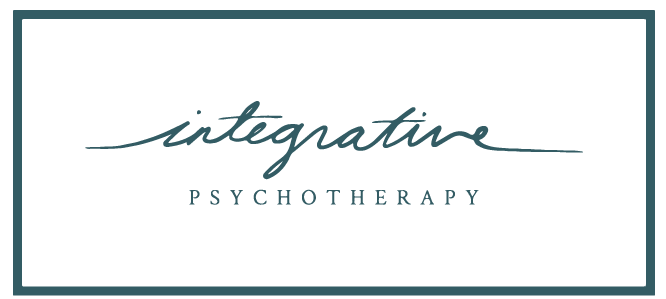Boundary Lessons & Candy Cane Lattes
Boundary Setting for the Boundaryless
“I can talk to you until I’m blue in the face, but I won’t be able to change the way I set limits. I know that I’m just not good at setting boundaries.”
Gloria is one of my former colleagues, and she says this to me as we sip our warm candy cane hot lattes at Starbucks. She is also a therapist and she shares this with me.
It’s a story that she’s been repeating for some time now.
She is stuck in this difficult dynamic with her boss that keeps replaying itself again and again and again.
Her eyes carry a loose glance of confusion and frustration as she looks around the cafe to make sure none of her clients or co-workers are there. I can sense how heavily this is weighing on her mind and body.
It seems that this reality is more pressing than usual. Her growing task list has been piling up, and she fears she will not be able to celebrate the holiday with any sort of peace-of-mind, if at all. Since COVID turned most therapy virtual, Gloria has been expected to work longer hours. Some nights she finishes working with one client with just enough time to kiss her daughter good night before she has another client. And then the paperwork… Needless to say, Gloria isn’t sleeping well these days. Her marriage is pretty rocky too.
As her shoulders slump slightly inward, she gets more animated in describing the struggle.
“Esther, I know you can’t be my therapist but you’re all into this mind-body science and I am more classically trained. I’m thinking I may need a few new tools to help me with this overwhelming time of my life. I have my own therapist obviously, but I think I might be stuck. CBT is not working for me right now and I am afraid I am going to snap in half. Also I think my therapist feels like there is not much more she can do to help me. She never expressly said anything, but I can just tell. Maybe we have outgrown each-other.”
My friends all know that I’m a big believer in mind-body-soul healing, and this is especially true when someone notices that talk therapy, coaching, and affirmations are not doing the trick. I actually know first-hand that Gloria’s therapist is good at doing the basic talk therapy and is right for clients who are looking for that kind of work. I do also know that Gloria’s therapist is going through some her own challenges, and so in my mind, I offer her some deep grace and compassion, but of course, I can’t say anything to Gloria, so I validate her experience and what she is feeling.
When the mind and actions are in disconnect
Gloria knows a lot of what she “should be doing” in her mind, but she keeps feeling stuck, it’s almost like there’s a breakdown in communication between what her mind knows and what her body can do, and that’s why she’s turning to me as she knows that at our practice, our clinicians are all about the deep dive and getting to the core of that disconnect so we can make some shifts.
What is somatic work and how does it help?
Mind-body healing is often referred to as “somatic work”. In every cell of our body there is a nucleus. In each nucleus is a “control centre” called the soma, which has been found to carry an incredible amount of data for such a tiny speck, but most importantly, it carries data from memories. Memories, whether they are ours or they are passed down to us genetically, can impact the way we think, feel and react. These may also show up as body memories or emotional flashbacks. Our bodies, as our greatest resource, often learned to take the brunt of any stress, pain, emotions or reactions we had, especially if we learned, in our younger years, to hold in our emotions or that emotions are shameful.
I look Gloria straight in the eyes, and say,
“Are you sure that you want help with this?
I can’t treat you as a friend, and somatic work is not about sprinkling some magic fairy-dust powder and hoping for the best. I know you are a bit skeptical of somatic work, and I have to tell you it’s not always easy. It can sometimes open up floodgates of emotion and it’s important to work with a therapist who is familiar with somatic methods. Someone who can help bring you back to the “here and now” and ground you. Someone who knows how to target a specific issue in a gentle yet wise and focused way and can help pace the work so it is done in a way that offers relief. I can give you a referral if you want.”
Of course, I cannot provide a therapy session, as it is outside of ethical limits to treat family, friends or colleagues, but I am more than happy to teach a basic educational idea. In fact, my practice started offering psycho-educational workshops to do just that. But of course, the workshops are not a substitute for therapy. When I notice that psychoeducation isn’t enough, I provide referrals when I am not ethically able to be the therapist.
All humans have moments of strength and moments of struggle
Gloria is a therapist too and she is well aware that she is floundering. She also knows that any kind of shift, any kind of work or any kind of problem you’re seeking to resolve can take more than a one time therapy session or workshop. Therapy is an ongoing practice. A commitment.
“No, Esther, I’m serious about this. I would like a referral to someone who does somatic based work. I need to try something different. Hey, didn’t you just hire a few new clinicians? I saw your Instagram posts about them and they seem incredible. Maybe I’ll call your office and book an appointment with one of them. For now, is there some sort of somatic tool that you can give me that might help carry me through until I find someone new to work with that fits just right?”
I gave her a link to a few free downloads “Mindfulness, Meditation & Body Scan” (which also has an audio clip of a meditation I crafted) & “Beginners Somatic Workshop” parts 1 & 2. Inside these downloads are a few exercises that I encourage new clients to start with to get used to making mind-body connections.
Exercises to help you create a sense of inner ease
For whatever reason, over time, many of us have “parts” of ourselves that start to rumble with each other, we have lost touch with our “felt sense”, mind-body connection and our inner compass. These exercises are designed to help you start to notice what is going on inside your body.
What is a “Felt Sense”?
Cultivating a “felt sense”, helps your mind and body be more in sync. We start with some small but helpful tips and help you practice by noticing yourself, and how your mind, body and energy is- especially when you have overwhelming emotions.
“Gloria, these activities can help get you into a state of awareness of your inner truths. If your body experiences sensations that feel like “red flags” about the way your boss speaks to you, or the unrealistic demands he has on you, and you feel hopeless and desperate about it, it’s important to explore that sensation. Your body can be quite intuitive when you learn to listen to it.”
As many of us, You, my dear reader, may relate to having lost touch with your own body sensations, just like Gloria.
How the body holds emotions and emotions
If you’ve gone through a rough patch, are feeling disconnected or have experienced a painful, shocking or traumatic event, or series of events, you may not be fully aware of how that may have affected you, or how it may still be playing a role in how you function. It sometimes becomes hard to fully stay in the body and in the present when triggered. Your body might feel like it’s in danger even when it’s not. Or you may suddenly experience a wave of overwhelm or panic and not know what’s triggering it. For many people, the way their bodies have learned to survive is by disconnecting from sensations and emotions and preserving itself.
Anxiety and the Body
What you may know, is that our nervous systems can’t tell the difference between real danger and perceived danger. This can happen if you have a predisposition toward anxiety, have been exposed to extreme stress or lots of fighting in your home, turmoil, abuse, violation, assault or neglect. You may have had to survive by dis-embodying your experience, either by becoming hypervigilant {over-alert} or dissociated {spaced-out , disconnected}.
This can also happen if you are faced with a situation like the one my friend described - needing to set boundaries at work, feeling triggered by authority (which can lead to either freezing up and being taken advantage of or getting into a power struggle and exploding) rather than taking appropriate, responsible, assertive, and clear steps.
My friend was talking about her boss, but I have heard this same story time and time again about parents, in-laws, a co-worker, a friend…
The basics on boundaries
Before we understand that boundaries are not only appropriate, but necessary for any healthy relationship to thrive, we tend to allow people to treat us in ways that no person should be treated. We become angry, anxious, and resentful. Boundaries actually help to protect us and the relationships we cherish.
Developing a “Felt Sense”
A “Felt Sense” is a skill that we teach all of our clients about, and is a somatic term we often use in session.
Developing a “felt sense” is developing a “bodily knowing”,
…It’s almost like developing a language in which your body communicates with you, allowing you to be more in sync.
Eugene Gendlin, a philosopher and psychologist coined the term, and explains it like this:
“A felt sense is not a mental experience but a physical one. Physical. A bodily awareness of a situation or person or event. An internal aura that encompasses everything you feel and know about the given subject at a given time—encompasses it and communicates it to you all at once rather than detail by detail. Think of it as a taste, if you like, or a great musical chord that makes you feel a powerful impact, a big round unclear feeling.
A felt sense doesn’t come to you in the form of thoughts or words or other separate units, but as a single bodily feeling.”
Cultivating and developing a felt sense is a wonderful resource and skill and is foundational to good somatic work. Our felt sense workshop is geared exactly to helping you to begin to develop just that.
Now, turning this back to Gloria, or any of you who are seeking relief.
We all have different ways to relieve tension, and it’s important to find the right approach that works for you to help alleviate pent up pressure, so you can start to reconnect with yourself.
Now, on the topic of listening to our bodies and Boundaries,
CLICK HERE for some tips on boundary setting
And turning back to you, I am sending sweet holiday wishes your way as I sip my candy cane latte
I look forward to continuing to grow with you,
Xx
Esther.

